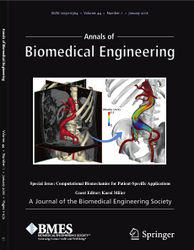 Franz JR, Khanchandani A, McKenney H, Clark WH. Ankle rotation and muscle loading effects on the calcaneal tendon moment arm: an in vivo imaging and modeling study. Annals of Biomedical Engineering (In press).
Franz JR, Khanchandani A, McKenney H, Clark WH. Ankle rotation and muscle loading effects on the calcaneal tendon moment arm: an in vivo imaging and modeling study. Annals of Biomedical Engineering (In press).
Abstract. In this combined in vivo and computational modeling study, we tested the central hypothesis that ankle joint rotation and triceps surae muscle loading have independent and combinatory effects on the calcaneal (i.e., Achilles) tendon moment arm (CTma) that are not fully captured in contemporary musculoskeletal models of human movement. We used motion capture guided ultrasound imaging to estimate instantaneous variations in the CTma during a series of isometric and isotonic contractions compared to predictions from scaled, lower extremity computational models. As hypothesized, we found that muscle loading: (i) independently increased the CTma by up to 8% and (ii) attenuated the effects of ankle joint rotation, the latter likely through changes in tendon slack and tendon curvature. Neglecting the effects of triceps surae muscle loading in lower extremity models led to an underestimation of the CTma, on average, particularly in plantarflexion when those effects were most prominent. We also found little agreement between in vivo estimates and model predictions on an individual subject by subject basis, alluding to unaccounted for variation in anatomical morphology and thus fundamental limitations in model scaling. Together, these findings contribute to improving our understanding of the physiology of ankle moment and power generation and novel opportunities for model development.
